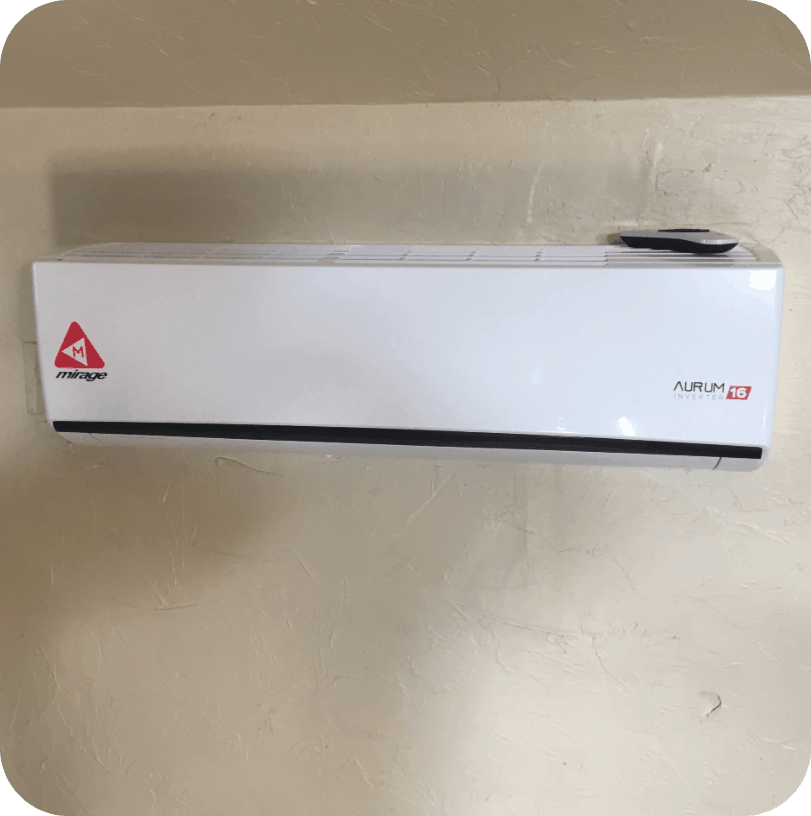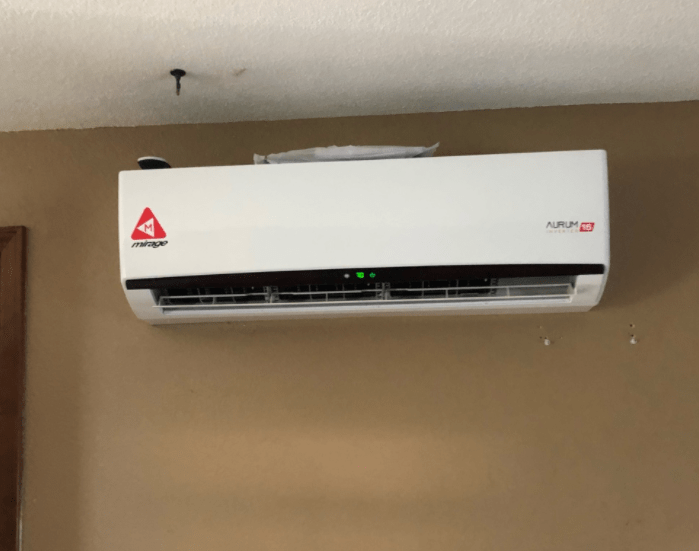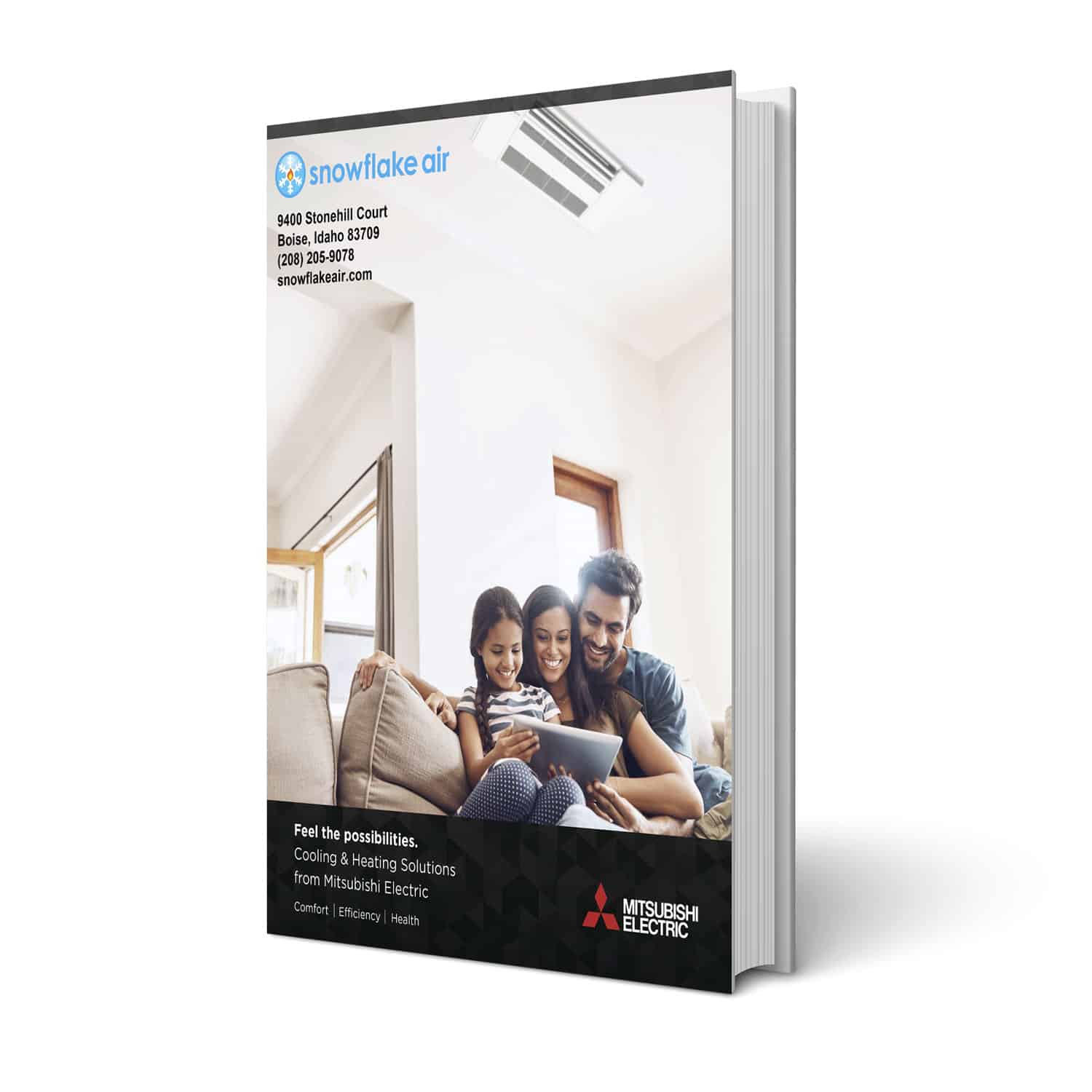 We got a call from a property owner in Boise, ID, who needed to make some significant improvements to his duplex. His older ductless mini split system couldn’t handle the workload, and he was tired of getting complaints from tenants.
We got a call from a property owner in Boise, ID, who needed to make some significant improvements to his duplex. His older ductless mini split system couldn’t handle the workload, and he was tired of getting complaints from tenants.
When we got there, we realized the problem was a little more complex than just that. Yes, the ductless system couldn’t keep up. But, it was a much older model that didn’t work as well as the new ones.
We discovered that it was destined to fail: It wasn’t the right size for the space, and it wasn’t installed properly.
We went through all these concerns with the property owner. Then, we filled him in on how ductless technology has improved.
In the end, he decided to stick with ductless. And, he was glad he did!
In this case study, we’ll go over:
- Why Today’s Mini Splits Are Much Better
- Heating And Cooling A Two-Family Home
- Less Cost, More Comfort
- Ductless Mini Split Installation In Boise, ID
Problem: An older ductless system was not heating and cooling a duplex properly. It was installed poorly, not as good as today’s models, and not strong enough for the second floor.
Solution: Installed a new Mitsubishi ductless mini split for state-of-the-art heating cooling. We sized it appropriately for the space.
Read More: How Much Does A Mini Split Cost In And Around Boise Metro?
Why Today’s Mini Splits Are Much Better
We understood our property owner’s frustration with their current system. Aren’t mini splits supposed to be the latest-and-greatest when it comes to home heating and cooling?
Well, yes, they are. But, today’s models work much better than the old units he had. And, the more we looked over the existing system, the more problems we found with it.
One problem was shoddy wiring. That meant bad communication between the components, leading to lackluster performance. And, the units weren’t sized properly.
In other words, our property manager needed a stronger heat pump to accommodate the second-floor apartment. And, this was all on top of, in general, how today’s models work better.
How Heat Pumps Have Improved
If you got a heat pump more than ten years ago, you wouldn’t expect all that much in the way of heating. Despite the name, these were more often known for their air conditioning abilities than what they could do in the winter.
In essence, what a heat pump does is move heat from one place to another. That’s one reason why they cost less to run than traditional HVAC. They never burn fossil fuels to create heat. Instead, they use what’s around.
In the summer, this is a simple proposition: Get the excess heat out of the house (and dehumidify while you’re at it).
In the winter, it’s a little trickier. The heat pump moves little warmth there is outside into the house where it can raise the temperature. There’s some science to the particulars, but that’s essentially how it happens.
Older models could do this as long as the temperature stayed above freezing. But, once you get lower than 32 degrees or so, they couldn’t function anymore.
However, today’s systems are much more powerful. Even when it’s negative 13 degrees outside — way, way colder than it ever gets in the Treasure Valley — the new heat pumps can pull enough warmth to keep you toasty and comfortable inside.
Heating And Cooling A Two-Family Home
So, what does this all mean for a duplex? The big advantage with a mini split is zoned heating and cooling. You get an HVAC system that’s just as powerful as the best conventional furnace and central air setup. But, it’s much more customizable.
The heat pump is only half of the mini-split. The other component is the air handlers.
Those indoor units measure the temperature in the rooms where we install them. Then, they provide the exact amount of heating and cooling that zone — and only that zone! — requires.
Imagine a home with ductwork and vents. Now, imagine being able to set the temperature in your bedroom differently than the setting in the living room.
With the air handlers, that’s what you get! And, with a two-family home, this is a clear advantage.
Each tenant has complete control over their apartment. And, each apartment now gets terrific heating and cooling.
It was a slight improvement for the first floor, and the second-story tenant noticed a huge change. And, our property owner enjoys a better profit margin now that he’s paying much less each month on the utility bills.
Less Cost, More Comfort
Let’s talk more about those last two points: Cost and comfort. With a newer ductless mini split — and one that’s sized properly this time! — this Boise, ID duplex has more comfort and lower utility bills.
Less Cost
Mini splits cost a fraction of what forced-air ACs and natural gas furnaces cost to run. In the winter, they don’t burn fossil fuels to create that warmth.
Instead, it gathers and amplifies what little heat there is outside to keep your home as warm as you want it.
The heat pump also has Inverter technology, which lets the blower run at variable speeds. This means that it can run in low-speed, low-power mode most of the time.
That way, it maintains the temperature consistently while also using less energy. It’s easier to run steady than correct a drifting temperature. And, it takes less energy to run in low-power mode than to turn on and off over and over.
More Comfort
That variable-speed blower works hand in hand with the air handlers to increase comfort for both apartments in this duplex.
The low-power mode means the rooms aren’t getting hotter or colder before the system turns back on. With each air handler using a separate thermostat, each tenant has excellent control over their apartments.
Then, each air handler does an excellent job of circulating the air. They can even detect and treat pockets of hot or cold air within a room.
Read More: Rebates and Financing For Mini Splits In And Around Boise Metro
Ductless Mini Split Installation In Boise, ID
All the benefits of a new ductless installation made it a no-brainer for our property owner to stick with mini splits. Even though the old setup wasn’t cutting it, he could see that a modern one with proper installation would make a huge difference.
So, of course, our first step was making sure he got the right system.
We did a careful load calculation. It took into account the building’s square footage, the layout, and even the insulation and windows. This way, we knew how much heating or cooling he’d need.
From there, it was a matter of placing the air handlers in the right places. Since the apartments were relatively small, they only needed two indoor units each.
We put one unit in each of the bedrooms and another in the main living space. They circulate air exceptionally well. So, two per apartment was enough to keep the entire space comfortable all year long.
Now, the tenants are happier. And, with lower energy bills, our property owner feels like he got a small bump in pay!
If your duplex, tri-level, or other investment property in the Treasure Valley can use a comfort upgrade and lower bills, call or email Snowflake Air for a free consultation for quality mini split installation in Boise, ID.





Trackbacks/Pingbacks